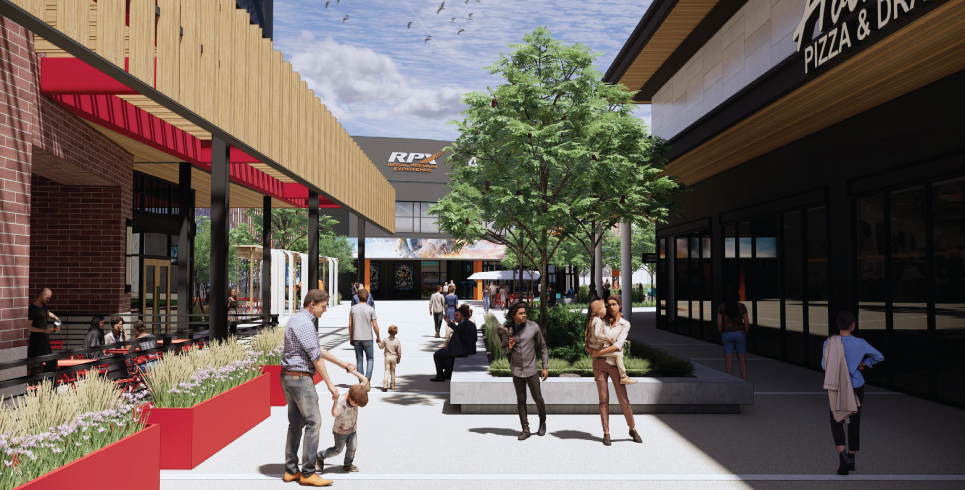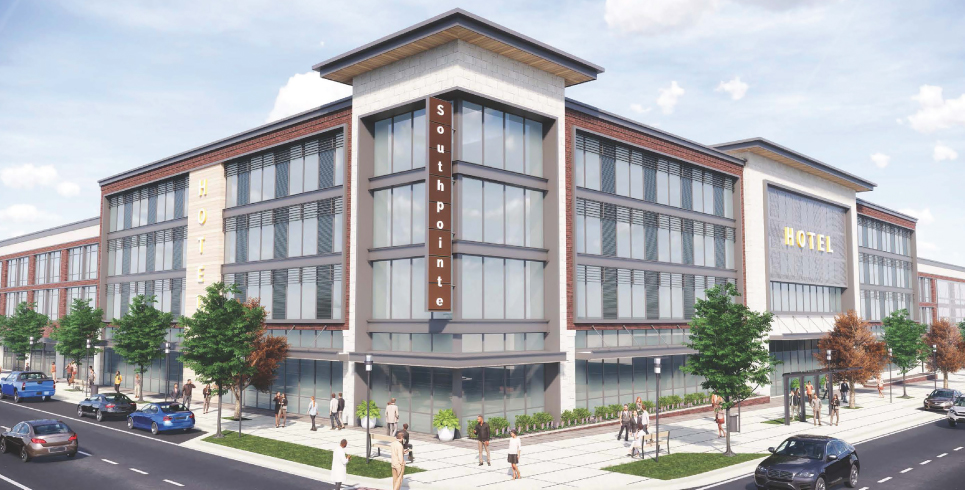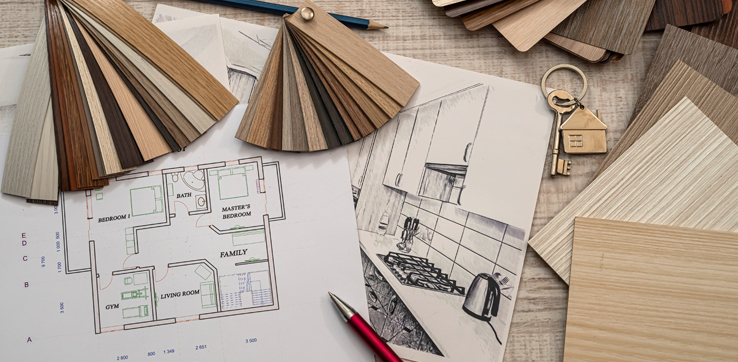As trends in the built environment continue to evolve, our designers have seen a new development trend popping up in suburban design projects across the country. Instead of shopping centers or strip malls, many developers are opting to create a smaller more walkable community with many amenities. We sat down with BRR principals Nicole Curry and Ryan Rosche to discuss this trend and how it relates to the retail, mixed-use and multi-family sectors.
How can we work with individual cities/jurisdictions to adapt to these new trends?
Nicole: Several jurisdictions desire this type of development. They want to bring more people into their city and they’re drawn to the walkability aspect and the advertising level these communities bring.
The key factor for the success of these developments is the location. They’re not being built on the fringes of a city. They are located in pockets near denser, established residential neighborhoods making it important to educate the neighbors and work with them through the design of the project. They need to be comfortable with the end result. It’s very common for neighbors to be initially unsure when they first hear the words: ‘mixed-use development.’ They will have concerns including noise pollution and traffic. It’s up to us to meet with them, and explain the details of the project and how it will impact their home values. One strategy we’ve implemented in a current project is a layering effect. Instead of putting a four-story multi-family building right next to the single-family homes, we’ve pulled the multi-family building further away from the property line and layered in townhomes to act as a buffer, slowly move from single-family homes to the retail development.
The city can reject a project, even if the zoning is there if they don’t feel that you have the neighbors’ interest in mind. So, it is essential to get the neighbors’ buy-in and show the city you have their approval.

How can we design these higher-density communities adjacent to neighboring subdivisions?
Nicole: In my mind, these aren’t located in specific areas of the country as much as it’s specific location in a city. Most downtown areas are already walkable communities so we are seeing these pop up in the suburbs where people are looking for that downtown walkability but still want the convenience of a suburban area. We’ve seen two great examples of this near our headquarter office in downtown Overland Park and the Lenexa City Center. These developments seek to revitalize these suburban city center areas and give them vibrancy and a true identity.
These are not being seen as destination locations for someone who lives halfway across town. The true objective is that someone would pop in the car for 5 minutes or, ideally, walk or bike to shops and restaurants. One way to help with the connectivity of surrounding neighborhoods is to add bike trails from established subdivisions to the shopping area. This promotes walkability to the location and provides an easy way for neighbors to access these amenities.
How do we see national retailers adapting to this trend?
Ryan: Retailers are continually searching for ways to engage in a more personal way, and one way to do that is by connecting with the local community. We don’t see shopping centers anchored by large retail tenants as we have in the past which opens the door for smaller, customer-focused retail formats. These become more successful when the emphasis is shifted from providing the largest selection possible to a curated product selection with store associates trained to engage with customers on a 1-on-1 basis. The retail space can maximize its ability to showcase the merchandise in a lower volume without needing a large stockroom. In many concepts, most products can’t be physically purchased in the store. They are shipped to your door with 2-day shipping. This isn’t a new concept, but as a society, we have been accustomed to having our goods shipped to our door within 1 to 2 days and now it’s the norm.
The investment brands have been making into micro-fulfillment has also been changing the way we shop and the way stores are designed. We are interested in experiencing how a product feels, but we don’t have to walk out of the store with that product in a physical shopping bag to get that satisfying feeling when you leave a physical store. This gives the retailer a lot of flexibility in their brick-and-mortar locations. The store is also more adaptable to go into non-traditional retail spaces instead of a traditional shopping center.

What other ways can retailers use this format to engage their consumers?
Ryan: Because retailers have adapted their store formats to become more flexible, we can offer new experiences to become a “third place” for customers. Many people have been looking for ways to reconnect with the community aspect after losing a sense of connection over the last couple of years. We have footwear clients who are providing run clubs and athletic apparel clients providing training rooms.
Now the focus for the retail market has flipped from a focus on merchandise to a focus on community. We’ve learned that we can connect with shoppers by engaging with them on services and they will return the favor by connecting with the brand and purchasing more products.
As this design trend continues to evolve, our team is working with both retail and multi-family clients to maximize the experience for the community. Whether it’s collaborating with retailers on new store concepts or working with jurisdictions and local communities to approve these developments, BRR has the experience needed to tackle these project types.




